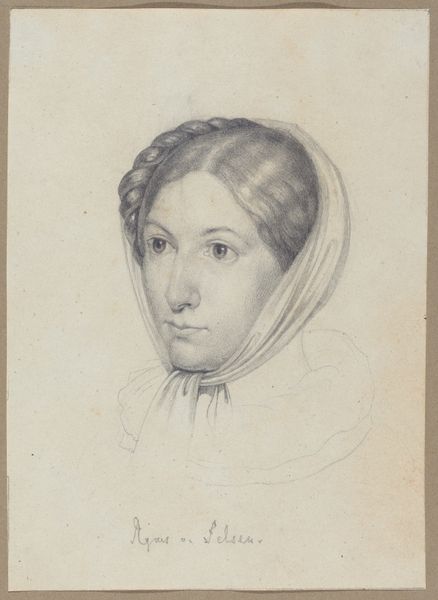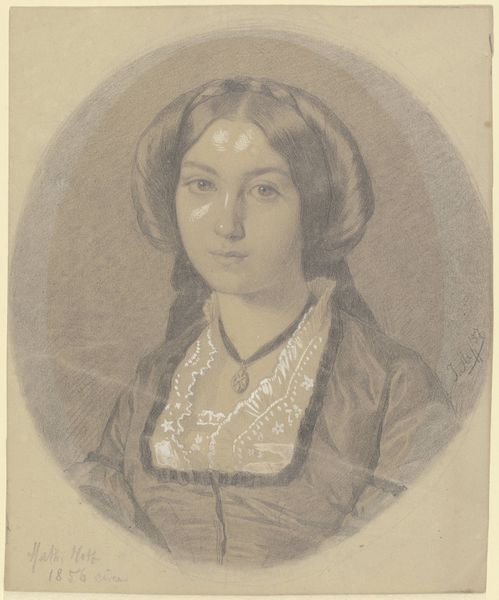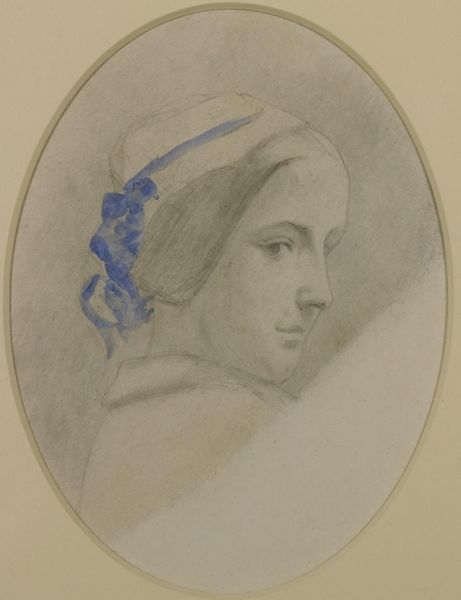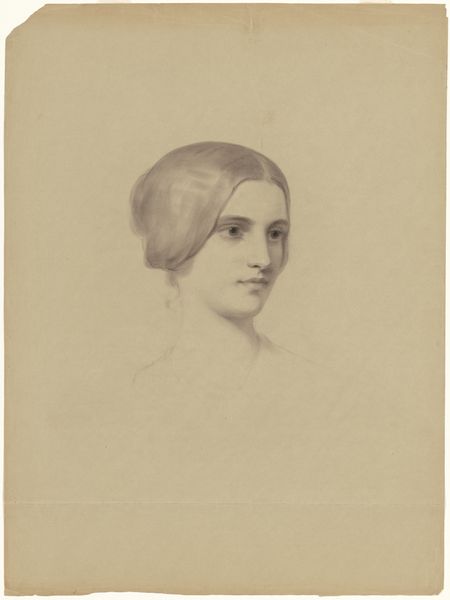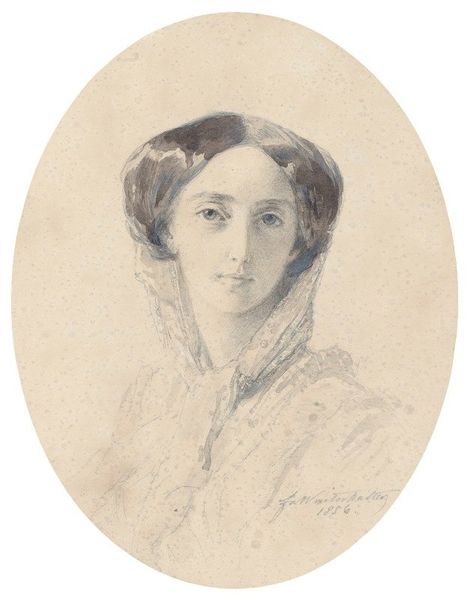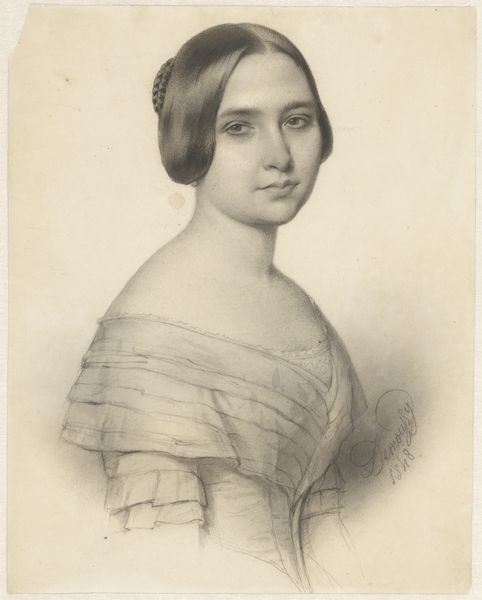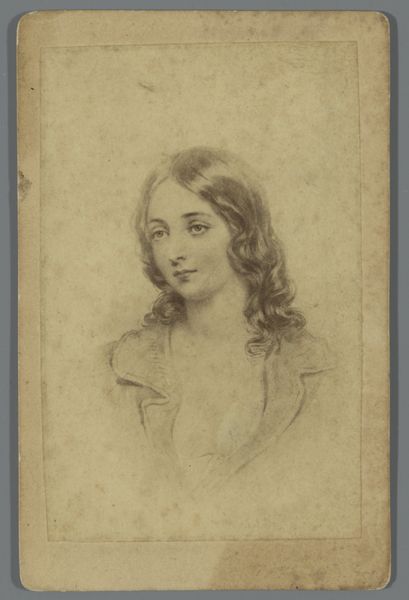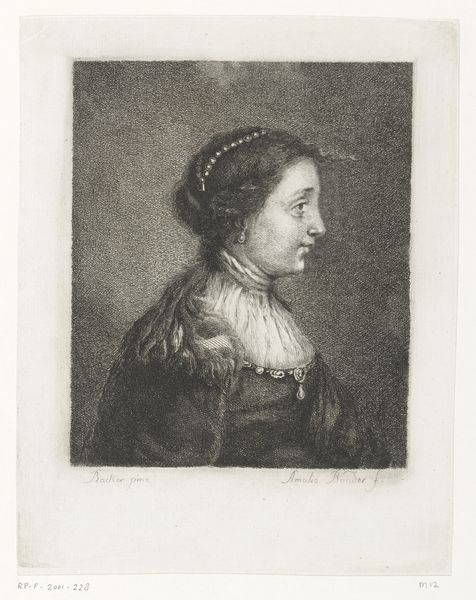
drawing, pencil
#
portrait
#
drawing
#
caricature
#
romanticism
#
pencil
#
portrait drawing
#
academic-art
#
portrait art
#
realism
Dimensions: height 483 mm, width 311 mm
Copyright: Rijks Museum: Open Domain
Editor: Here we have August Allebé’s "Italian Woman," created in 1849 using pencil on paper. It has this serene, almost classical feel to it. What do you see in this piece? Curator: What immediately grabs my attention is the relationship between the artist's labor and the representation of labor, perhaps unseen, within the subject's social stratum. How does the rendering of her clothing – that finely detailed headdress, for example – reflect the textile industry and its place in mid-19th century Italian society? We must think about who had access to these materials and who produced them. The choice of pencil itself is telling. Consider its availability and affordability compared to, say, oil paints at the time. Who was the audience? Editor: That’s a really interesting point about the materials and accessibility! So, are you saying that the simplicity of the medium might also reflect something about the subject’s status, or perhaps the artist’s intention in portraying her? Curator: Precisely. It also compels us to contemplate the artist’s process. Was this drawn from life? How long would she need to sit, still and composed, to allow Allebé to produce such detail? We can unpack power dynamics, here, by asking what assumptions the artist made about labor in the making of the portrait and her own role in it. And what choices about labor are made manifest for the viewer in 2024? Editor: That's a perspective I hadn't considered before. It definitely gives me a lot to think about regarding the artist's intentions and how the artwork functions as a historical and material object. Curator: Indeed. Material analysis gives access to thinking critically about social structures within art.
Comments
No comments
Be the first to comment and join the conversation on the ultimate creative platform.
